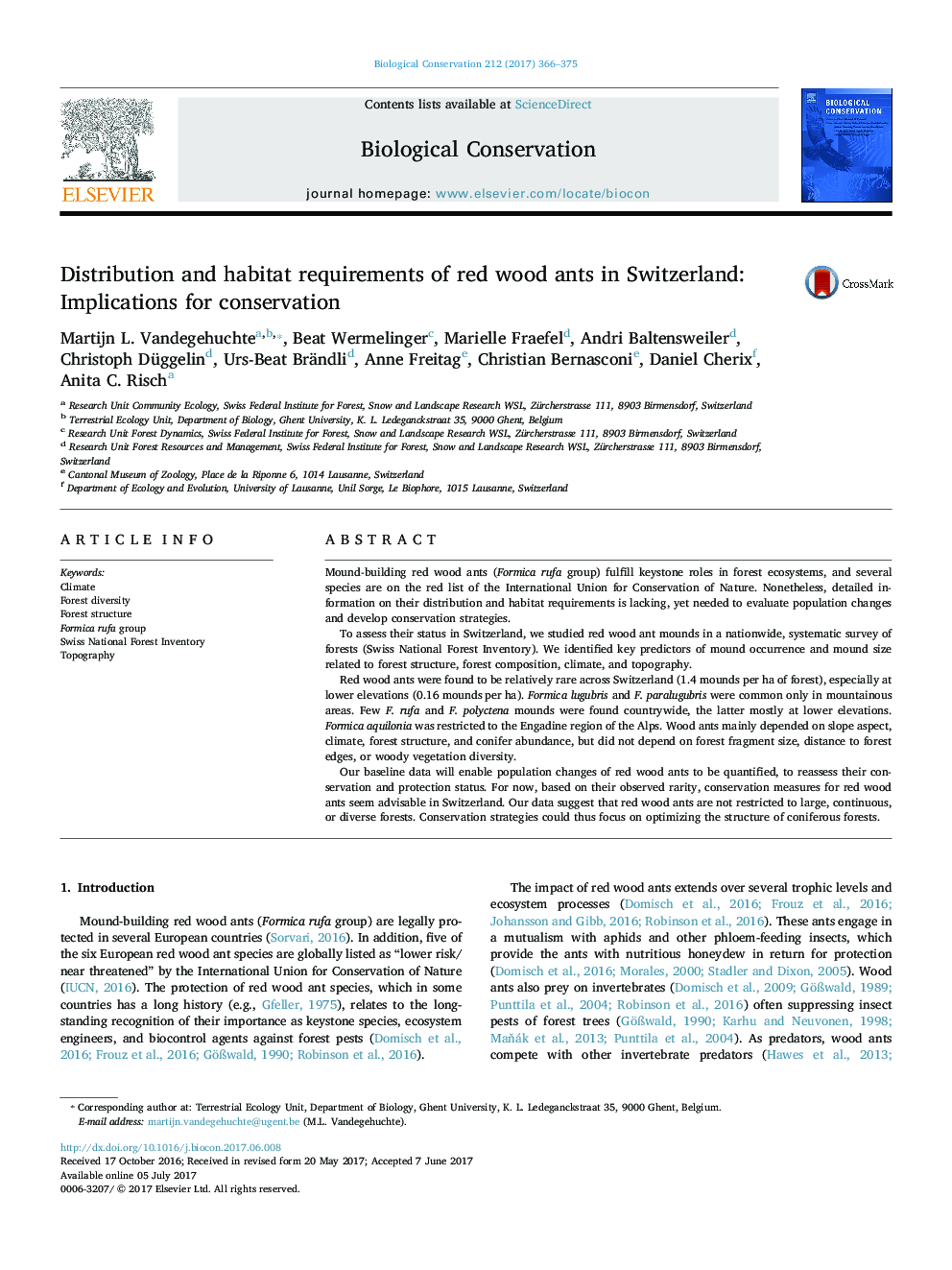| Article ID | Journal | Published Year | Pages | File Type |
|---|---|---|---|---|
| 5743119 | Biological Conservation | 2017 | 10 Pages |
Mound-building red wood ants (Formica rufa group) fulfill keystone roles in forest ecosystems, and several species are on the red list of the International Union for Conservation of Nature. Nonetheless, detailed information on their distribution and habitat requirements is lacking, yet needed to evaluate population changes and develop conservation strategies.To assess their status in Switzerland, we studied red wood ant mounds in a nationwide, systematic survey of forests (Swiss National Forest Inventory). We identified key predictors of mound occurrence and mound size related to forest structure, forest composition, climate, and topography.Red wood ants were found to be relatively rare across Switzerland (1.4 mounds per ha of forest), especially at lower elevations (0.16 mounds per ha). Formica lugubris and F. paralugubris were common only in mountainous areas. Few F. rufa and F. polyctena mounds were found countrywide, the latter mostly at lower elevations. Formica aquilonia was restricted to the Engadine region of the Alps. Wood ants mainly depended on slope aspect, climate, forest structure, and conifer abundance, but did not depend on forest fragment size, distance to forest edges, or woody vegetation diversity.Our baseline data will enable population changes of red wood ants to be quantified, to reassess their conservation and protection status. For now, based on their observed rarity, conservation measures for red wood ants seem advisable in Switzerland. Our data suggest that red wood ants are not restricted to large, continuous, or diverse forests. Conservation strategies could thus focus on optimizing the structure of coniferous forests.
